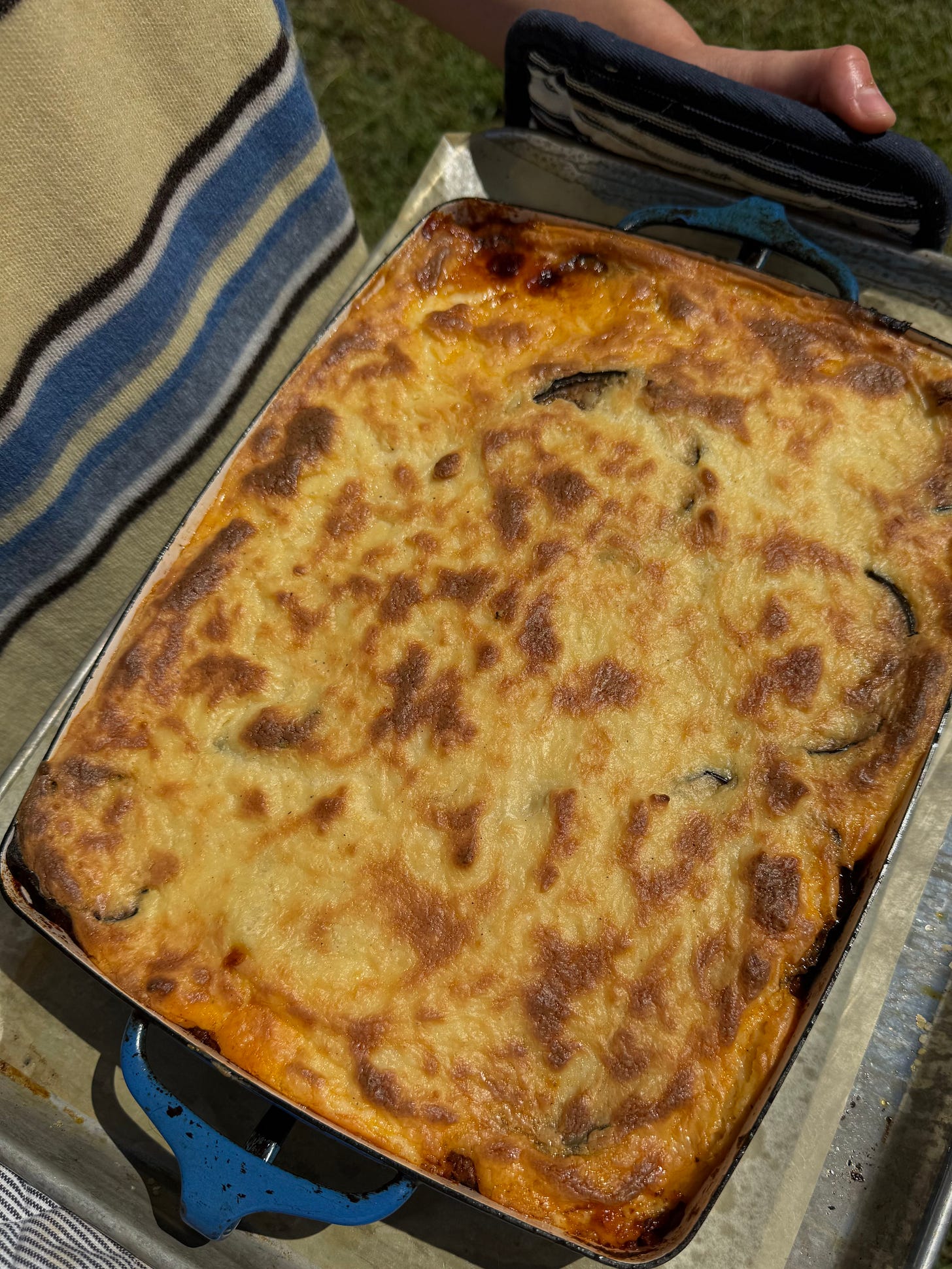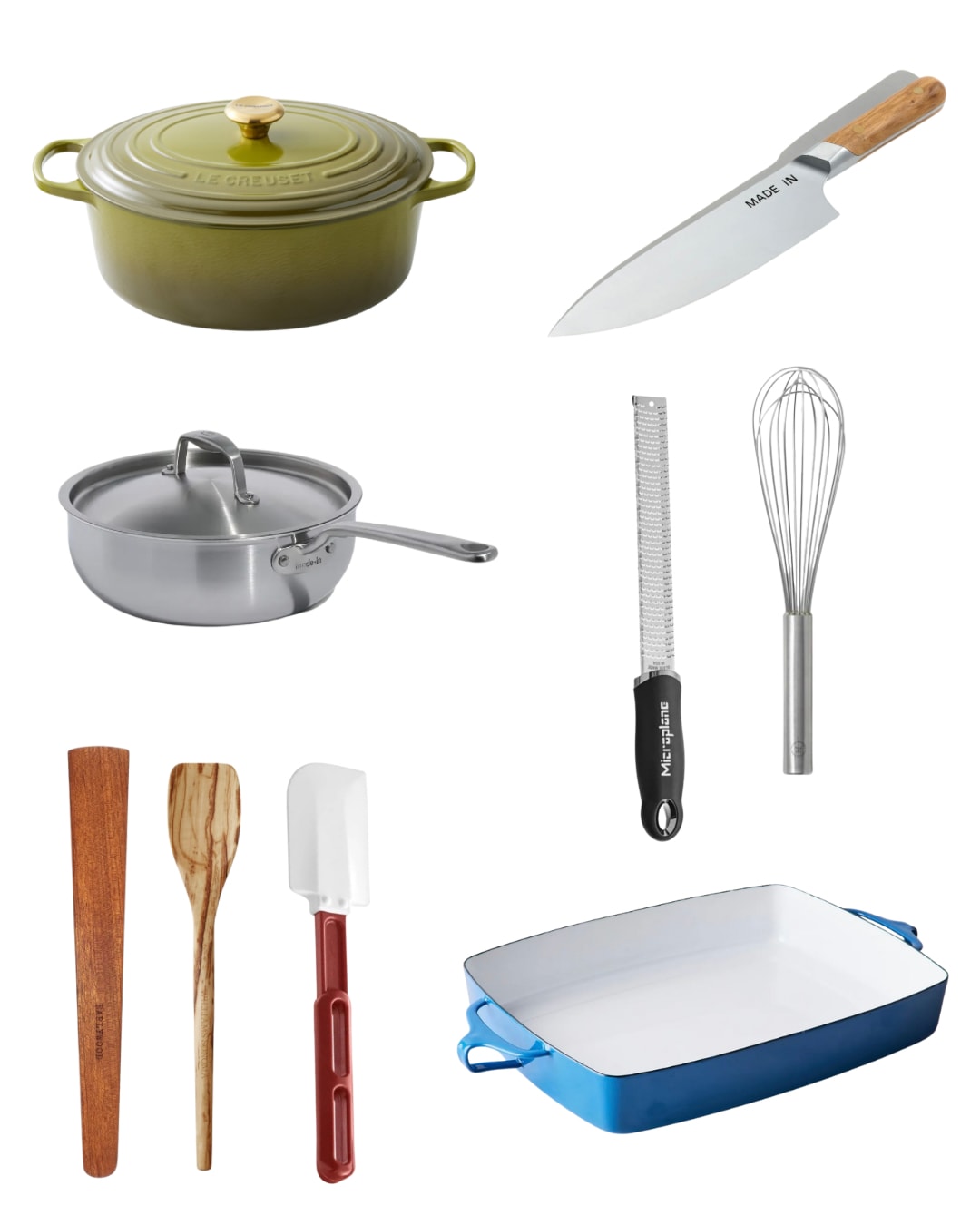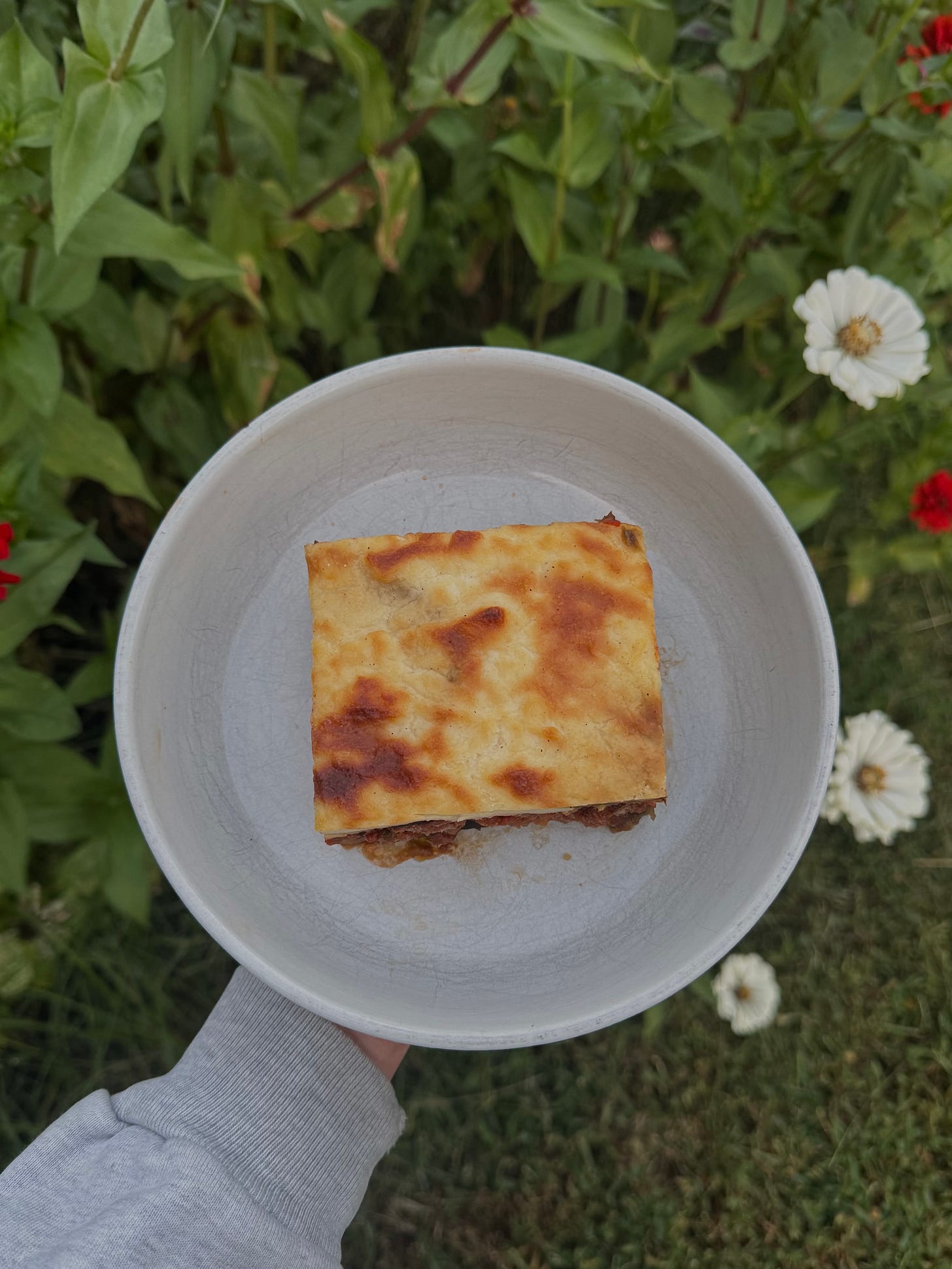Moussaka
I felt a little weird sharing this recipe because…I am not Greek. Like, not even a little. I don’t know that I need to be throwing my hat into the moussaka-recipe arena as it were. Especially because this isn’t a dish inspired by moussaka. It’s just straight up moussaka. However, this has become one of our most popular dishes of the summer at Scratch Made and over the last few years I feel like I’ve gotten my method down pat. This is the recipe that I’ve developed over that time based on much boots on the ground research. And so fine! I’ll share it!
Our menu changes every week—6 different entrees, 4 with meat and 2 without. Plus 3 side dishes, 1 focaccia, and whatever else we feel like throwing in the mix. So, to keep things fresh and well rounded, we cook many different styles of cuisine. With every new dish we research the most authentic approach. Then it gets filtered through the lens of how can we make this with mostly local ingredients and at scale?
For some dishes we’ve found (through much trial and error) that we need to diverge from an authentic approach more than others. For example, we wait all year for tomatillos to show up on the produce availability list. And with them, one of our favorite dishes to make is enchiladas verdes. We grill the tomatillos along with poblano peppers and onions. Blend them together with lime juice, cilantro, and a little salt. Then we braise the chicken and roll it up in fresh tortillas from Tortilleria Sinaloa. The whole thing gets bathed in the sauce and baked under a healthy sprinkle of cheese until bubbly and delicious.
Until recently, we would shallow fry the tortillas first before dipping them in sauce and rolling them around the chicken. The frying helps the tortillas stay flexible and prevents them from cracking and falling apart. Otherwise they’ll absorb too much sauce and get mushy. This step was necessary but it was time consuming and assembling the enchiladas would often take whoever was unlucky enough to be tasked with this dish most of the day.
So, we’ve adjusted. Instead we rebranded it as enchilada casserole. Rather than frying, dipping and rolling, we assemble everything like a lasagna and cut it into squares. The portion is larger, it takes about half the time to make, and in my opinion, the chicken stays juicier.
Moussaka is exactly the opposite. It’s a dish that’s sort of tailor made for what we do. It’s also a bit of a process to assemble but over the years we’ve gotten it down. We start by slicing the potatoes and eggplant into thick rounds. I think that traditionally, these are often shallow fried in a pan until golden brown but we roast them at a high heat with a nice amount of olive oil for a similar effect. Then we slowly cook beef, onions, and garlic, in crushed tomatoes with a little bit of red wine, cinnamon, and oregano.
That simmers low and slow until the raw tomato is completely cooked out and has been replaced by a deep rich flavor. To assemble, we pull out our giant hotel pans that fit about 30 portions in each and start by layering the potatoes, followed by the meat mixture, then the eggplant, and finally a thick layer of creamy béchamel. Traditionally, a layer of potato and eggplant rounds make up the base of the casserole, but when we’re making upwards of 100 portions, we’re already using an insane amount of eggplant. So, at work we just do the one layer. That’s about the only tweak that we need to make.
The whole thing gets baked until the béchamel becomes entirely golden brown and sets into a thick custard-y sheet. Then it cools in the fridge overnight so we can easily cut it into many perfect (and rather hefty) squares. It’s elaborate no matter how you look at it, but so so worth it. Plus, it’s the kind of dish that’s better leftover than it is fresh out of the oven because the layers have time to set and the flavors meld together. It’s a favorite for a reason and after a few summers, I feel like I’ve perfected my approach.
Tools you’ll need (and some you don’t):
A 13”x9” casserole dish. This one is my favorite.
A Dutch oven or large pan like this for the ragù. I absolutely do not need another Dutch oven (I have two) but if I didn’t have one already, I’d be deeply tempted by this olive color.
A flat wooden spoon for scraping the brown bits off of the bottom of the pan. This one is my tried and true but this is my new favorite.
A metal whisk both for breaking up the ground beef and making the béchamel
A small pot for making the béchamel. This pot is actually so useful—I find myself using it all the time.
A silicon spatula for scraping the sides of the pan
I love using a microplane to grate garlic instead of mincing it and it’s a must for finely grated Parmesan. I love this one in particular.
A half sheet tray for roasting the eggplant
In the video for this I use an olive oil from our friend’s orchard in Greece. If you live in Baltimore, you can buy it at Angel’s Ate Lemons and pick up a bottle of natural wine while you’re at it. :)
Ingredients:
For the ragù:
1 lb ground beef
1 Tbsp olive oil
1/2 onion, small dice
2 cloves garlic, finely chopped
1 Tbsp dried oregano
1 Tbsp ground cinnamon
1 Tbsp tomato paste
1/4 cup red wine (optional)
16 oz can crushed tomatoes (plus half a can of water)
pinch red pepper flakes
salt and pepper to taste
Keep reading with a 7-day free trial
Subscribe to Scaled Down to keep reading this post and get 7 days of free access to the full post archives.





